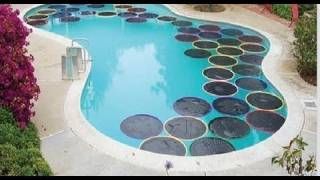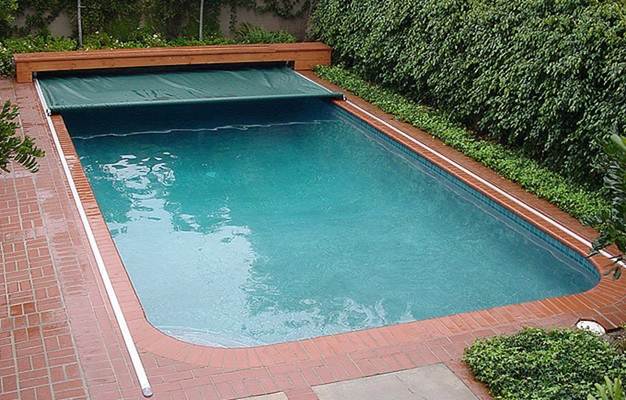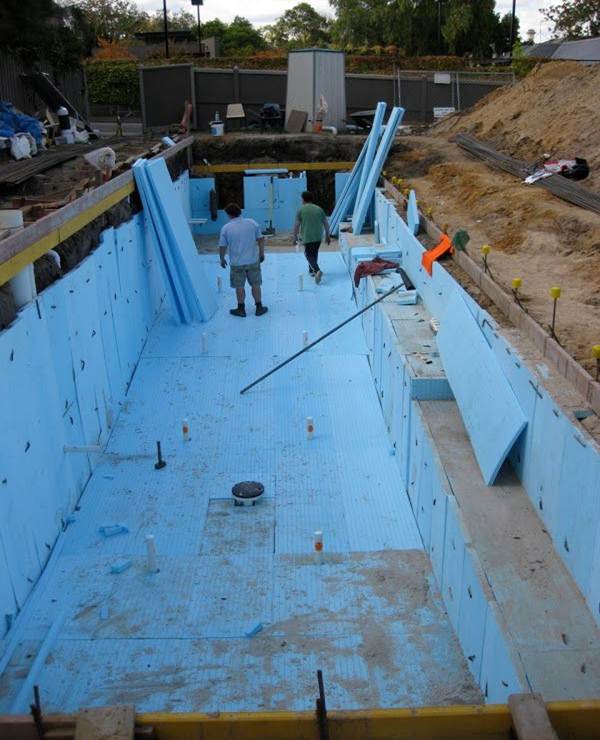Swimming Pool Insulation Guide


Can Insulation Make your Pool More Energy Efficient?
Although nothing beats a peaceful summer afternoon spend beside your own swimming pool free of noise or any other disturbance, not a lot of people are aware of the fact that pools can be a massive energy consumers. Namely, it takes a vast amount of energy to heat the pool, clean it and maintain water circulation, why these can be somewhat expensive to maintain. Well, all these problems can easily be solved with proper swimming pool insulation. The idea of adding insulation to your pool may sound strange and costly at first, but it will not take much time until you notice all the benefits of added insulation. It will help the pool preserve heat gained from natural sources, why you will not have to additionally heat the pool and thus save some energy. Namely, depending on the climate, if there is a difference between the temperature of the pool water and the temperature of the ground or air, if the pool walls are not properly insulated, the heat will flow and escape through the walls. This also goes for heat loss via evaporation, since these temperature differences will cause the hot water to evaporate. In order of avoiding all these issues, simply follow the given steps in the swimming pool insulation guide.
Swimming Pool Covers
Due to the fact that pools are most often used during the day or seasonally, the question referring to the proper protection during the time the pool is inactive, arises. Namely, the water in the pool will reach desired temperatures during the day, but that heat will be lost during the night, when the outer temperature drops, if the pool is left uncovered. Well, if you want to preserve some heat or at least slow down and decrease heat loss during nighttime, it would be smart to use adequate pool covers that will add certain amount of insulation and provide protection from heat loss caused by temperature drops and wind effects.

There are many different types of swimming pool insulation covers you can choose from, depending on the size, shape and the type of pool you have. One option is an opaque cover, other insulated or uninsulated. Uninsulated opaque covers are made of thin layer of vinyl, while insulated ones are covered with a thin layer of polyethylene, used to minimize heat loss through evaporation but also reduce passive solar gain. On the other hand, solar pool covers are also efficient in reducing heat loss, but not at the price of eliminating solar heat gain. If you are having an irregularly shaped pool, then one large piece of insulated swimming pool cover will not do the trick, why you should opt for a number of smaller solar rings that are usually made of UV-resistant vinyl. Finally, you can go for specially designed liquid pool covers that contain special nontoxic chemicals that are released into the water, forming a thin layer of liquid cover thus minimizing heat loss through evaporation.
Swimming Pool Insulation Options
Now, unlike swimming pool covers that are used to add a layer of protection and insulation during the time the pool is inactive, swimming pool insulation added to the ground and walls of the pool is an efficient mean that will provide protection from heat loss during the entire season. There are also a few insulation options here, as well. Probably the most popular one, since it is basically a DIY job that can be done pretty fast, refers to using special bubble wraps that are attached to the outer surface of the swimming pool walls, thus preventing the heat collected during the day to escape during the night and thus maintaining more constant and stabile temperature of the water. This bubble wrap pool insulation is very easy to install, so the first thing you need to do is measure the swimming pool walls from top to bottom and all the way around so you can determine just how much material you need. The good thing is that this insulation material usually comes in rolls so there might not be the need to cut it, but you can simply roll it around the pool. On the other hand, if trimming is necessary, you can use a pair of scissors or a utility knife. You can attach the insulation via specially designed clips or aluminum tape, just make sure that it goes tightly along the pool walls. When adding insulation, make sure to cover the pipes as well, by applying the same installation method.

Another option in swimming pool insulation that could be more expensive and somewhat more complicated to install includes adding rigid XPS insulation boards. However, this will provide a much more efficient insulation than other materials and offers a more permanent solution. You will notice that some insulation manufacturers have managed to create rigid insulation boards that are especially designed for swimming pools, due to the fact that here you need insulation that will not only serve its purpose but also remain unaffected by water and moisture. One example is the Cellecta HEXATHERM XPOOL closed cell insulation boards that are installed below the concrete slab, onto the swimming pool bases and retaining walls. These boards not only offer great thermal performance, able to meet the Building regulation U value requirements, but can also be installed without the damp proof membrane, due to their low water absorption.
Insulation Shop offers quality XPS insulation for swimming pool insulation projects, available for a fast delivery and at low prices. Send your quote enquiry to info@insulationshop.co.








